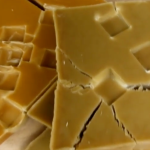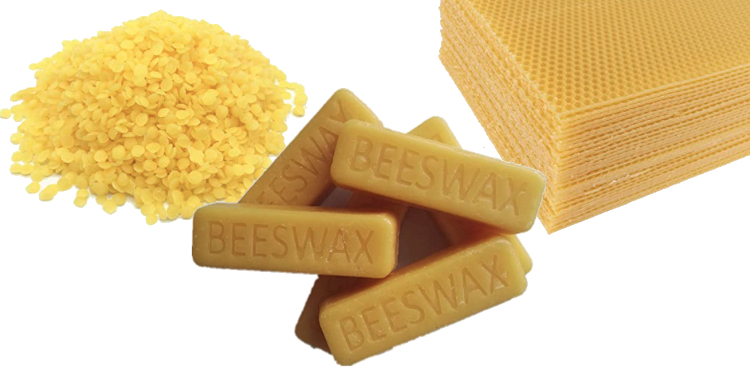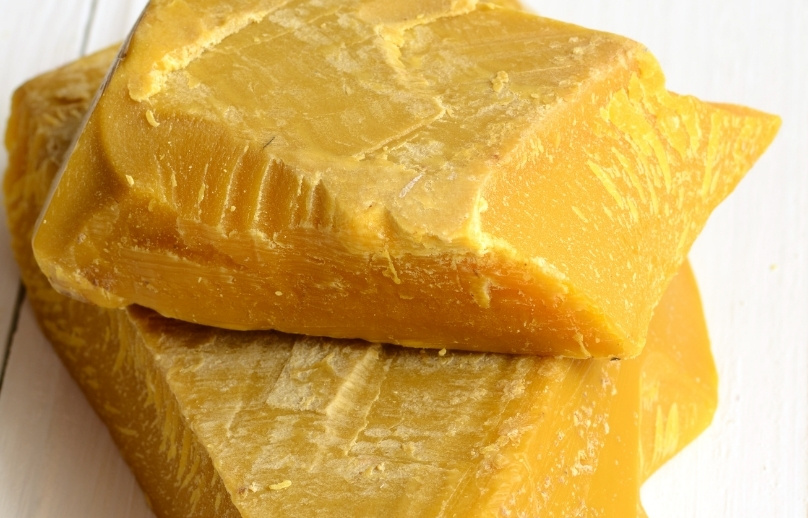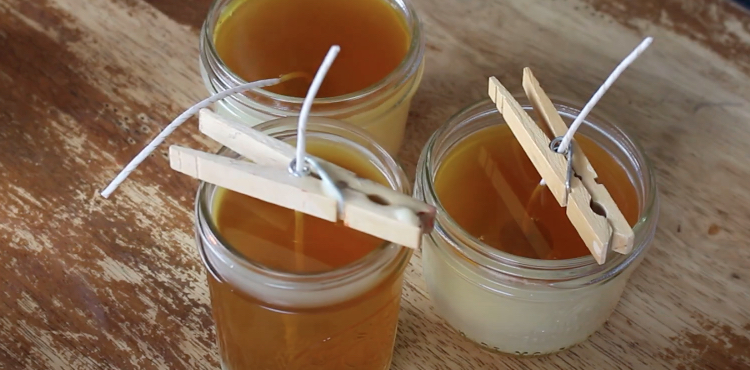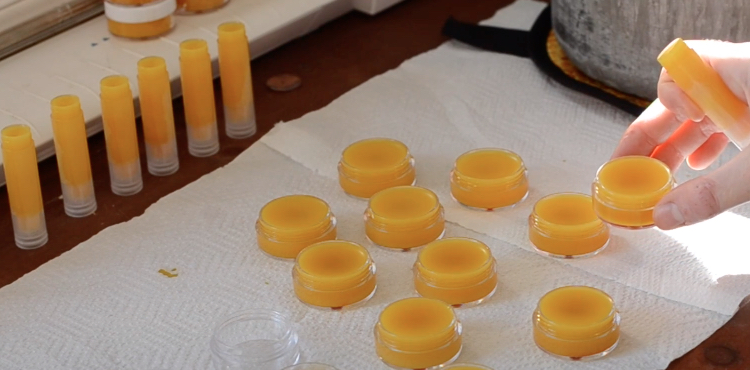When I first started working with beeswax, I learned a crucial lesson the hard way – a small splash of hot wax left me with a second-degree burn! Did you know that beeswax can heat up to 170°F (77°C) when melting? It has the highest melting point of any wax. Although I don’t recommend you let it get to this temperature.
While beeswax is a natural material, proper safety precautions are essential for preventing accidents. Whether you’re a beginner or experienced crafter, this comprehensive guide will help you handle beeswax safely and confidently.
To ensure you’re starting with quality materials, check out my article on where to find authentic beeswax suppliers for sourcing pure, safe beeswax. Let’s make sure your crafting journey stays both creative and safe!
Common Uses of Beeswax
Beeswax, created by our wonderful honeybees, has so many uses. While versatile, each application requires specific safety considerations. Here are just some of the many ways you can use beeswax and a note about precautions you should take while using this incredible wax.
Cosmetic Applications:
- Lip balms
- Moisturizers
- Salves
- Creams
Safety Note: Always perform patch tests before full application.
Craft Uses:
- Candle making
- Food wraps
- Furniture polish
- Leather conditioning
Caution: Use appropriate ventilation for heated applications.
Food-Related:
- Coating cheese
- Food preservation
- Candy making
Important: Use only food-grade beeswax.
Overview of Beeswax Properties
Beeswax is a natural substance made of Esters, Hydrocarbons, free fatty acids and other compounds, with unique characteristics that require specific handling. Here’s just a little info you should know when working with it:
- Melting point: 144-147°F (62-64°C)
- Low flash point: 400°F (204°C) – potentially flammable above this flash point
- Reactive when heated and potentially combustible when overheated
- Water-resistant, incompatible with strong oxidizers
- Natural preservative properties
- Non-toxic and biodegradable in pure form
Understanding these properties and treating your beeswax with care helps prevent accidents and ensures safe handling during projects.
Common Hazards When Working With Beeswax
Beeswax is amazing to work with, although I may be biased but there are some hazards you should keep in mind as you start to use it in your cosmetics, crafts, balms, salves etc. The primary risks include:
- Burns from hot wax
- Fire hazards during melting
- Slip hazards from spills
- Fume inhalation
- Equipment-related injuries
Identifying Allergies and Sensitivities
Although beeswax allergies are quite rare, it’s likely safe for most people, allergies do occur. So keep in mind the symptoms below when working with beeswax or applying it to your skin.
Common Reactions to Watch For:
- Skin redness/sensitivity
- Itching
- Rash development
- Respiratory reactions (from heated wax)
- Contact dermatitis
- Cross-reactions with propolis (a more common allergy)
Prevention Steps:
- Perform patch tests 24 hours before use
- Start with small amounts
- Document any reactions
- Maintain good ventilation
- Use protective equipment
Safe Handling Practices and Essential Safety Equipment
Temperature Control:
- Use double boiler method (avoids heating to flash point) and heat gradually
- Never exceed 185°F (85°C)
- Monitor with accurate thermometer
- Keep away from open flames
- Never leave melting wax unattended
- Cool slowly
Protective Equipment:
- Heat-resistant gloves
- Safety goggles
- Long sleeves
- Closed-toe shoes
- Face mask for fume protection
- Fire extinguisher nearby
Workspace Setup:
- Clean, organized area
- Heat-resistant surfaces
- Good lighting
- Easy access to safety equipment
- Away from children and pets
Safe Containers and Pouring Techniques
With practice you’ll get comfortable handling beeswax but it’s always helpful to have a good understanding of safe handling techniques and equipment to avoid injury, accidents, damage to your product, etc. Here are some things to keep in mind:
Choose containers that are:
- Choose containers that are: heat-resistant, non-reactive, easy to pour from, the proper size, and have a stable base
- When pouring: pour slowly and steadily, avoid splashing, and cool containers gradually
Fire Safety Equipment
Anytime you work with heat you should ensure you have fire safety equipment easily available, especially since you can’t use water to put out beeswax fires. Here are some essential items to keep on hand:
- Class B fire extinguisher
- Fire blanket
- Smoke detector
- Heat detector
- Emergency shutoff switches
Proper Ventilation Systems
Depending on the volume of beeswax you’re melting and working with, you may want to consider more extensive ventilation needs. Minimally you should consider ensuring there is air flow and ventilation in your workspace. Consider the following:
- Direct exhaust capabilities
- Cross ventilation
- Fume hood for large operations
- Air quality monitoring and filtered air system
- Regular maintenance
First Aid Kit Essentials
I love a good first aid kit. It’s always handy to keep around your home, workspace, or office. Here are some beeswax medical treatment options to stock yours with:
- Burn treatment supplies
- Antihistamines
- Sterile bandages
- Emergency contact information
- Eye wash station
First Aid for Beeswax-Related Incidents
Burns:
- Cool affected area immediately
- Do not remove stuck wax
- Remove jewelry/clothing if possible
- Cover with sterile dressing
- Seek medical attention if severe
- Document incident
Allergic Reactions:
- Remove product immediately
- Clean affected area
- Apply cool compress
- Take antihistamine if needed
- Seek medical help if severe or concerned
When To Seek Medical Attention
You know your situation best and are the only one who can determine when to seek medical attention but here are some times you should seek medical help:
- Burns are larger than 3 inches
- Respiratory distress
- Severe allergic reactions
- Chemical exposures
- Head injuries from falls
Storage Guidelines for Beeswax Products
Raw Beeswax Storage:
- Cool, dry location
- Away from direct sunlight
- Original packaging or airtight containers
- Temperature-controlled environment
- Proper labeling
Finished Product Storage:
- Appropriate containers for each type
- Clear dating system
- Product-specific conditions
- Regular inspection
- Proper sealing
Temperature Considerations:
- Ideal storage: 60-70°F (15-21°C)
- Avoid freezing
- Prevent heat exposure
- Monitor seasonal changes
- Adjust storage accordingly
Environmental Impact and Safety
Disposal Guidelines:
- Never pour beeswax down drains
- Cool completely before disposal
- Check your local regulations
- Recycle when possible
- Proper containment
Beeswax in Food Applications
Food Safety Standards:
- Use only food-grade wax
- Maintain sanitary conditions
- Follow temperature guidelines
- Follow proper storage practices
- Conduct regular quality checks
Usage Guidelines:
- Clean equipment thoroughly
- Monitor temperatures carefully
- Avoid cross-contamination
- Use appropriate containers
- Label everything clearly
Tips for Using Beeswax in Crafts
Project Safety:
- Adequate ventilation
- Proper temperature control
- Appropriate tools
- Clean workspace
- Emergency preparations
Best Practices:
- Test new techniques small scale first
- Document procedures
- Maintain equipment
- Follow recipes exactly
- Keep safety equipment handy
Regulatory Standards and Certifications
Common Standards:
- FDA regulations for food contact
- Cosmetic safety requirements
- ASTM standards for certain uses
- Organic certifications
- Quality assurance marks
Compliance Tips:
- Research applicable regulations
- Maintain documentation
- Regular quality testing
- Proper labeling
- Updated certifications
Safety Checklist for All Projects
Before Starting:
- Verify workspace safety
- Check equipment condition
- Gather protective gear
- Review procedures
- Prepare emergency items
During Project:
- Monitor temperatures
- Maintain ventilation
- Use protective equipment
- Follow procedures
- Document process
After Completion:
- Proper cleanup
- Safe storage
- Equipment maintenance
- Record keeping
- Review safety measures
Safety should always be your top priority when working with beeswax to prevent accidents, injuries, damage to your projects and ensure quality results! By following these guidelines and maintaining proper safety equipment, you’ll create a secure crafting environment or workspace for yourself and others.
Remember, taking a few extra minutes to set up proper safety measures can prevent hours or days of recovery from accidents and costly replacement of your products. Stay safe, stay prepared, and enjoy your beeswax journey responsibly!



